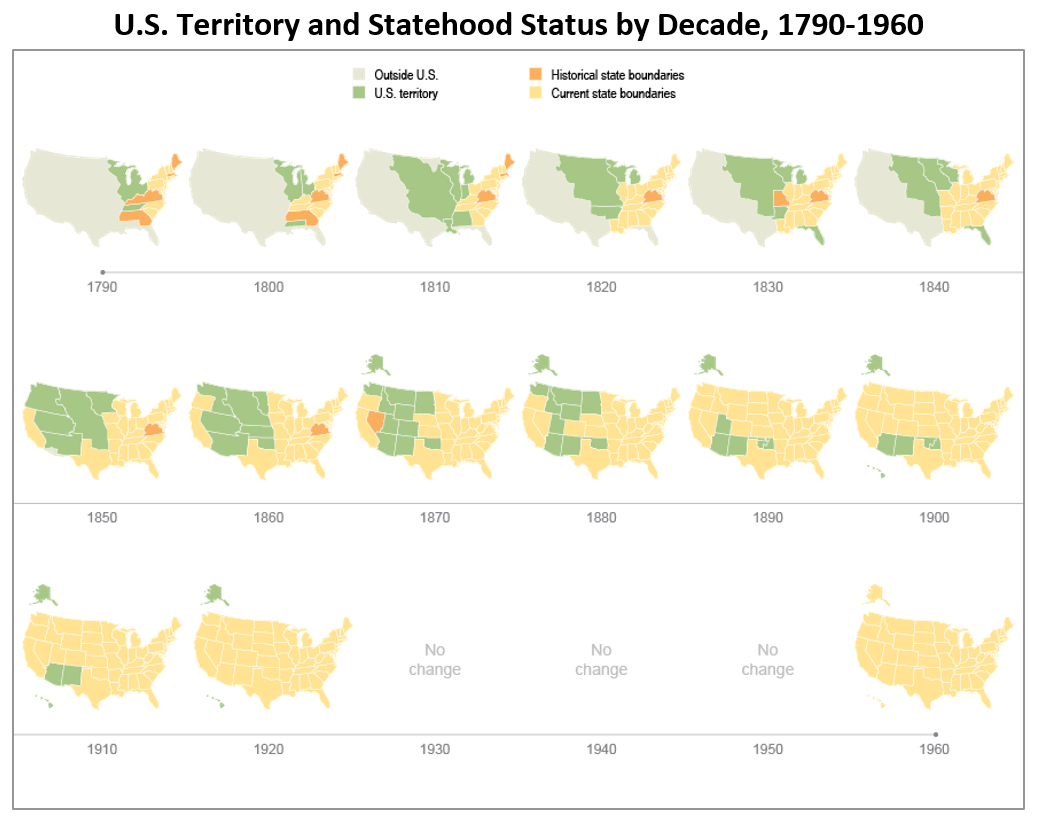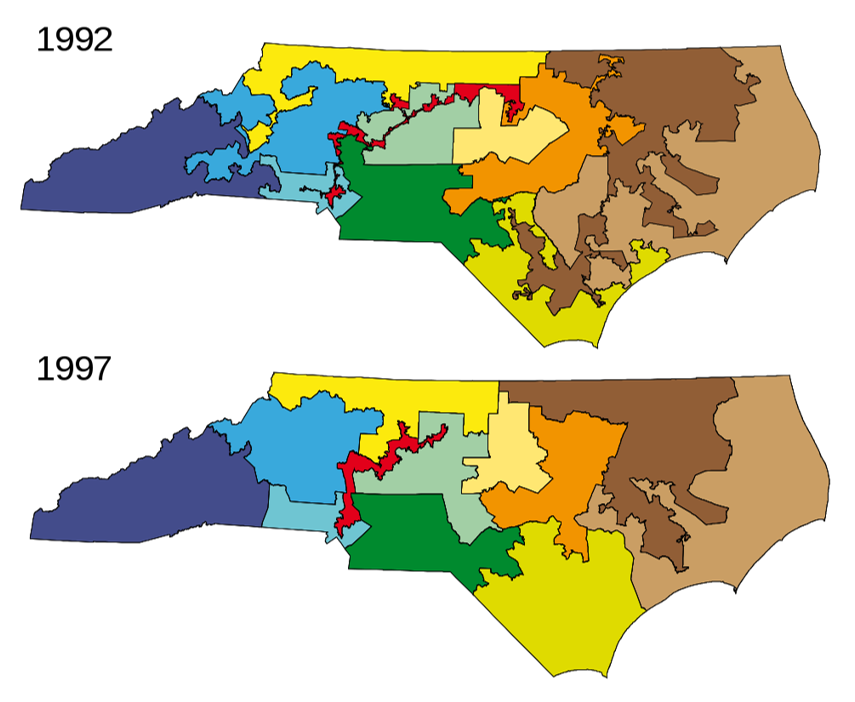Comparing vs. Combining
Comparing vs. Combining
As demonstrated by previous examples, multivariate maps are often challenging—both for cartographers to create and for readers to interpret. The term multivariate map is typically defined as a map that displays two or more variables at once (Field 2018). There is another popular option, however—comparing multiple maps. One common and often useful technique is to design a layout with many maps and show them in a progression—this is called small multiple mapping.

Small multiple maps are particularly useful for depicting data over time, as they can be arranged in a linear sequence, the way that time is typically depicted. With the increasing popularity of web-maps, small multiple mapping is often replaced with an animated map—in such maps, each map shown is shown as an individual time-stamped frame. Despite the advantages of animated maps (e.g., creating visual interest, efficient use of layout space), there are still benefits to traditional small multiple mapping. One primary advantage? The ability to simultaneously compare the various maps.
While multivariate maps are often engaging and visually interesting, it is important to keep in mind the alternatives available. We can imagine combing the set of maps in Figure 7.6.1 with some sort of transparent layering, or perhaps with an animated map that alternates between the two views. In this case, however, such designs would likely add little to the presentation value of these maps and be quite challenging to create. Here, simple works well.


